A 2012 study found that 84.1% of women who menstruate have painful periods. It takes an average of 1-2 days every cycle. Dysmenorrhea, as it is also called, is caused by menstrual cramps.(1)
Menstrual cramps occur when the uterus contracts to shed off the uterine lining. As a result, you feel pain in your lower back, upper thighs, and lower abdomen.
For some women, the pain is normally mild and minor, whereas, in others, it can be devastating. There are different types of dysmenorrhea and their respective causes.
Meanwhile, here are 17 home remedies for painful periods that you can use to relieve the pain at home.
#1: Hydrate your system

Bloating can make the symptoms even worse. Therefore, you should drink a lot of water which eases bloating.
Water will help you reduce dehydration. Vomiting and even diarrhea are also associated with menstrual cramps, and these symptoms are severe when you are dehydrated.
Drink 6-8 glasses of water daily and much more during your periods. Drinking hot water will improve the circulation of blood in your system and help relax your muscles. This relaxation of your muscles will reduce the contraction of your uterus that cause the cramps
#2: Apply hydrotherapy treatment for painful periods
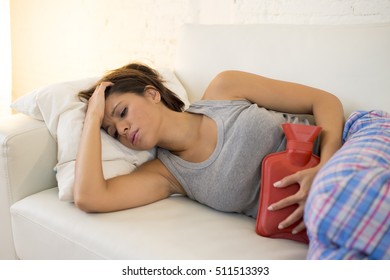
A little heat helps relax the muscles. It will relieve tension and increase blood flow. In a study done in 2018, heat of 40ºC is as effective as ibuprofen. Here are 3 approaches that you can apply this remedy.
- Taking a hot shower. Allow the hot water to run down your whole body. This will help subject all your muscles to heat enhancing relaxation.
- Hot fomentation to ease Painful periods. In this procedure, you need three heavy towels, and very hot water. And you must have assistance from a mate or anyone.
Procedure
- Take one towel and dip it in boiling water, then wring out all water droplets.
- Put one dry towel on the lower section of the belly
- Then, put the hot one on top and cover with the third towel.
- Do this for 15 minutes, and the pain will go away.
- Hot bath. Another way you can use hydrotherapy is by adding hot water into a bathtub. It can be any tap so long as you can be covered to the neck. Let the water temperature be at least 104F but not too hot to burn you.
- Heating pad. If you have a heating pad, you can add hot water to curl up with it on your abdomen. This will help relax your abdominal muscles.
#3: Use essential oils to massage your abdominal area and lower back
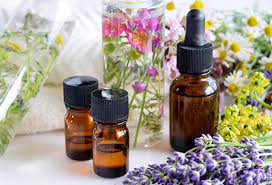
A 5 minutes massage can relieve cramps. Gentle massage done on the abdominal section and lower back encourages blood flow and helps relax the uterine muscles. This relaxation of the muscles reduces uterine spasms.
In a study of 48 women based on the effects of massage on menstrual cramps for essential oils and synthetic fragrance, both the groups showed positive results.
There was relief in both the tests, but the group that used essential oils did much better. The study further revealed that the duration of pain after massaging with essential oil was reduced by 12 hours.
Some of the essential oils you can use include marjoram, clary sage, and lavender essential oil. When using these oils, make sure you go for top quality, then you can use other unscented lotions and cream to dilute them. This will help reduce any incidence of skin irritation.
When you are doing massage, you must always rub away from the spine and towards the heart. Always begin gently, then increase the intensity gradually.
#4: Do physical exercise when experiencing painful periods

Aerobic exercise is known for boosting endorphins. These are also called feel-good brain chemicals. Endorphins will boost your mood and relieve pain in your system.
A 2015 study found that women who engaged in aerobics or stretching exercises thrice a week for two months reduced painful periods.
#5: Enhancing your diet can alleviate painful periods
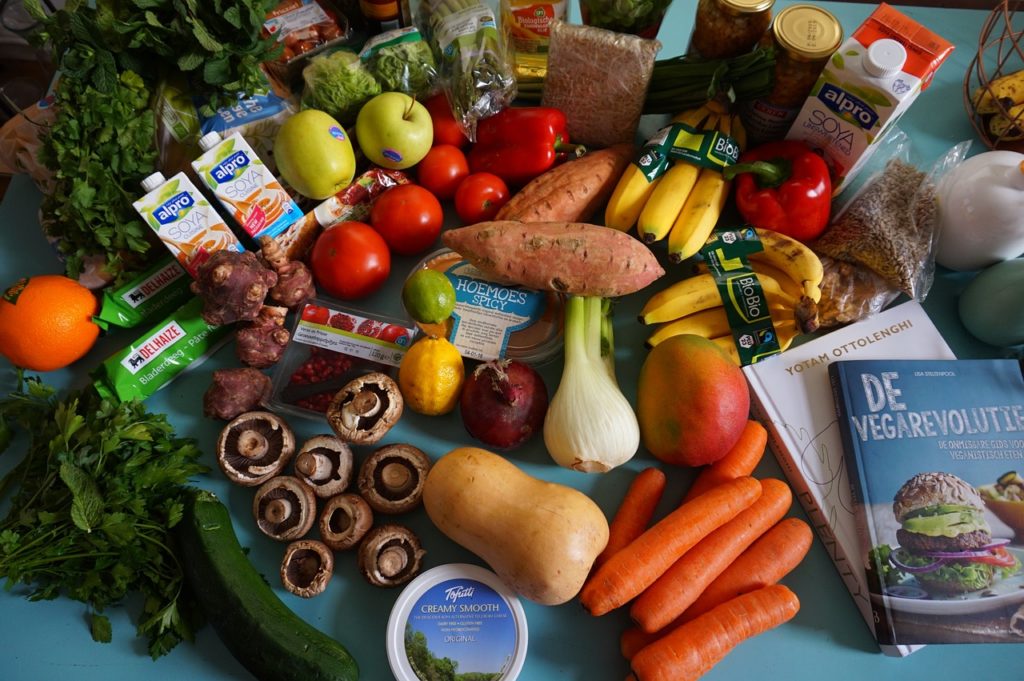
Your lifestyle and dietary habits can be your wile or woe in handling painful periods. Most women who experience painful periods engage in diet manipulation by avoiding some foods.
Avoid fast foods, processed foods and animal products for they cause inflammation. Research evidence shows that reducing fat intake may help reduce menstrual cramps.
In a research published in Obstetrics and Gynecology, a number of women were put on a low-fat vegetarian diet. The results showed that their pains were eased.
Foods that reduce inflammation in the body often tame menstrual cramps. Studies show that plant-based diets are effective in reducing inflammation in the body. Avoid alcohol and stimulants, which are also causative agents of inflammation in the body.
#6: Getting Sunlight / Vitamin D for period cramps

An increase in levels of prostaglandins increases the severity of painful cramps. This group of lipids causes the contraction of the uterine walls that result in cramps.
Vitamin D reduces the production of prostaglandins. This vitamin is synthesized in the skin when you get sufficient morning sun.
In a study done with women experiencing primary dysmenorrhea, when they were given doses of Vitamin D, the pain was reduced one week into the test and a month later.
It’s advisable then that you know the level of Vitamin D in your body.
#7: Reduce stress to curb painful periods cramps
Stress and depression worsens painful periods. It’s therefore sensible to control the excess presence of your situations.
A 2020 clinical study found that emotional disorders like depression and stress may lead to dysmenorrhea.
Another 2021 study affirms the relationship between primary dysmenorrhea and depression. It will be well if you work on effective ways to control depression to ease your painful periods.
#8: Use more herbal teas when having period cramps
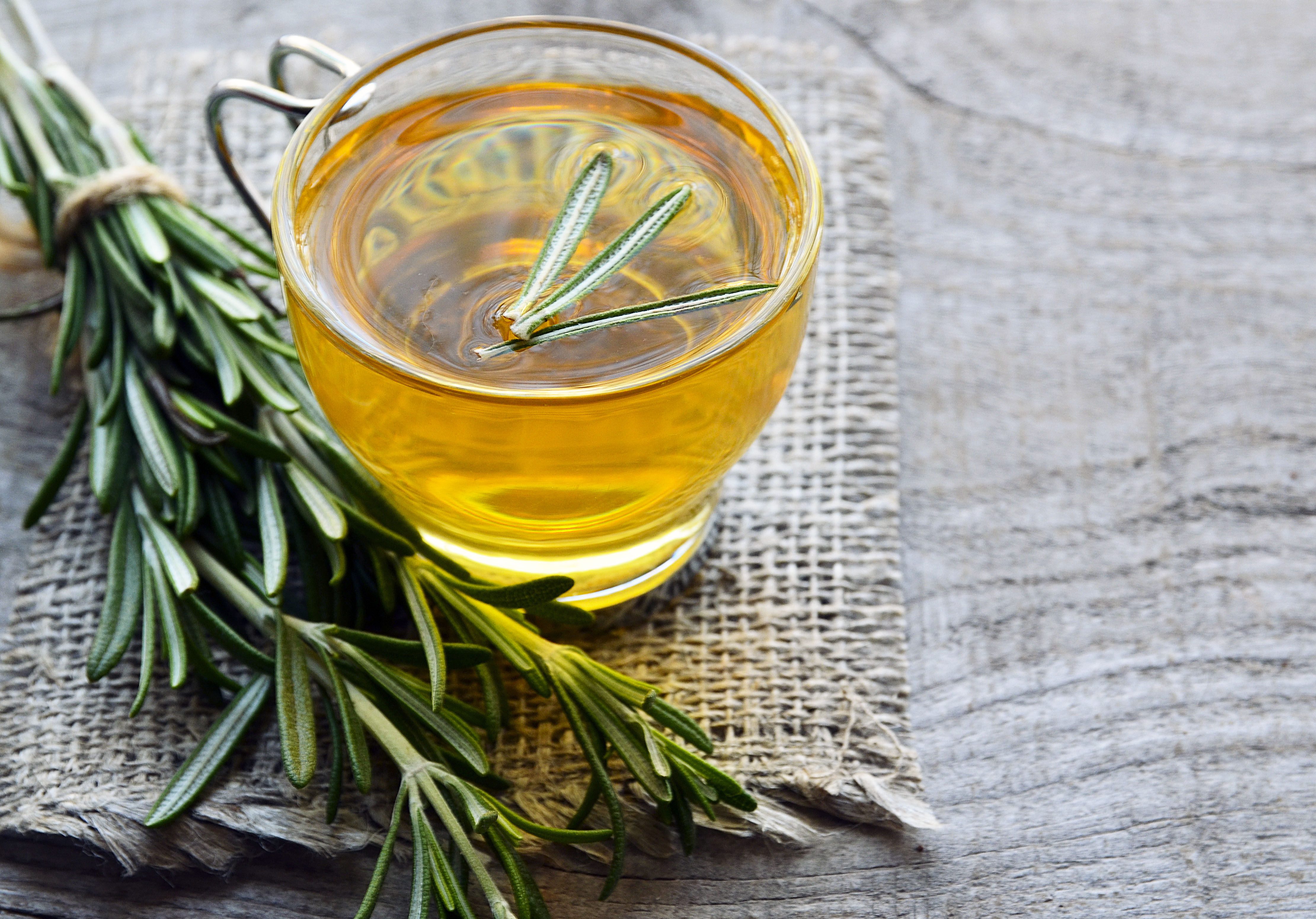
Drinking chamomile, fennel, and ginger tea can help reduce cramps. These teas have antispasmodic compounds and anti-inflammatory properties that reduce uterine muscle spasms. Herbal teas also reduce the stress that will help you curb the severity of the pain.
#9: Take Vitamin B1 (Thiamin)
A 2013 study of students on premenstrual syndrome was done to determine the effect of using Thiamin to relieve painful periods.
It was found that there was relief in individuals who used Vitamin B1 capsules. However, it will be best if you use natural Vitamin B1 from foods. You can get vitamin B1 in the following foods
- Whole grains
- Lentils
- Almonds
- Oranges
- Figs
- Blackberries
- Cherimoya
- Artichokes
Vitamin B1 has several health benefits to the brain, muscles and it’s an anti-inflammatory vitamin.
#9: Avoid caffeine-containing beverages to reduce the intensity of painful periods
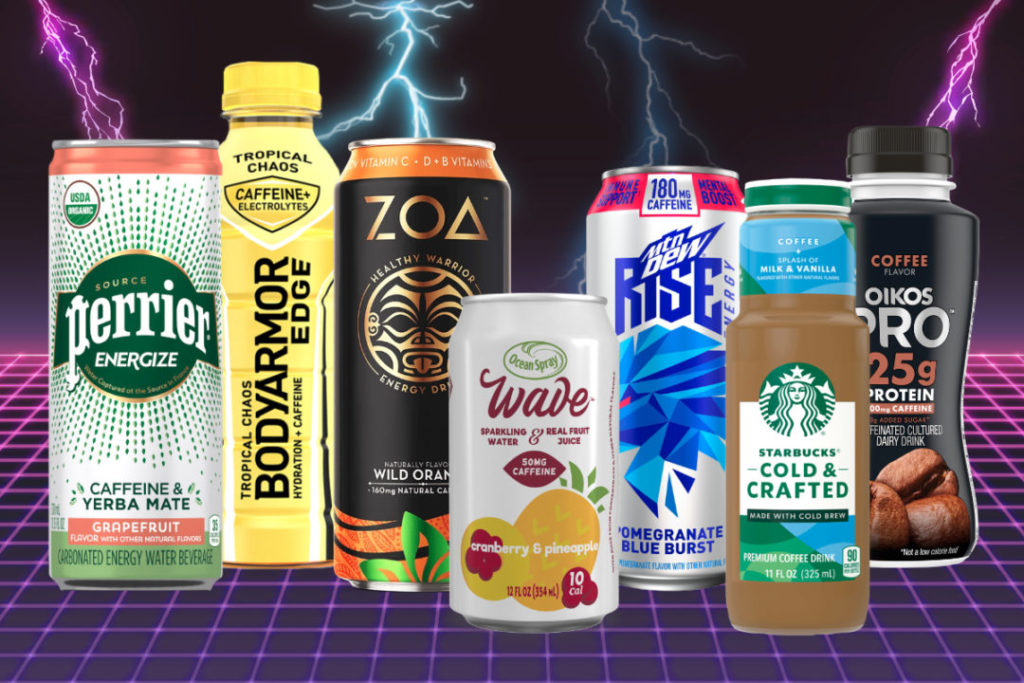
Caffeine has adverse effects on your system. It narrows your blood vessels. When your vessels are narrower, they increase contrition of the uterus, making cramps more painful. Avoid caffeine. This component is found in the foods below:
- Colas
- Coffee
- Chocolate
- Tea
- Energy drinks.
#10: Increase your Boron intake
Boron helps the body to absorb calcium and phosphorus. It also helps reduce menstrual cramps. A study of 113 students found that boron reduces the length and the intensity of period pains.
Here is a list of foods rich in boron that you can add to your diet:
- Peanut butter
- Avocados
- Prunes
- Chickpeas
- Bananas
#11: Up the amount of calcium in your diet
Calcium is a beneficial dietary requirement that helps reduce muscle cramping during periods. The daily uptake of calcium should be 1000mg per day for women of 19-50 years. You can get calcium in green leafy vegetables, sesame seeds, figs and Oranges.
#12: Increase magnesium in your diet
Magnesium helps reduce menstrual cramps; this is according to a study in the university in San Diego.
The amount of intake depends on the severity of your pain. Foods that contain magnesium include spinach, black beans, peanut butter.
#13: Avoid certain foods to reduce symptoms of painful periods
There are foods that you should do away with from your diet. Foods that cause bloating and water retention will worsen your cramps.
Avoid highly seasoned foods, carbonated beverages, alcohol and fatty foods. Reducing the uptake of these foods will reduce cramps and uterine tension.
#14: Balance your Hormones
Hormonal balance is like ingredients in a cake recipe. Too much or too little of one ingredient will spoil the whole taste. Hormonal imbalance is having too much or too little of a given hormone.
Even slight changes have adverse effects on your body mechanisms. Dysmenorrhea is a symptom of hormonal imbalance. Other symptoms of this condition include heavy and irregular periods.
By balancing your hormones, you will evade menstrual cramps.
#15: Avoid over the counter painkillers for painful periods
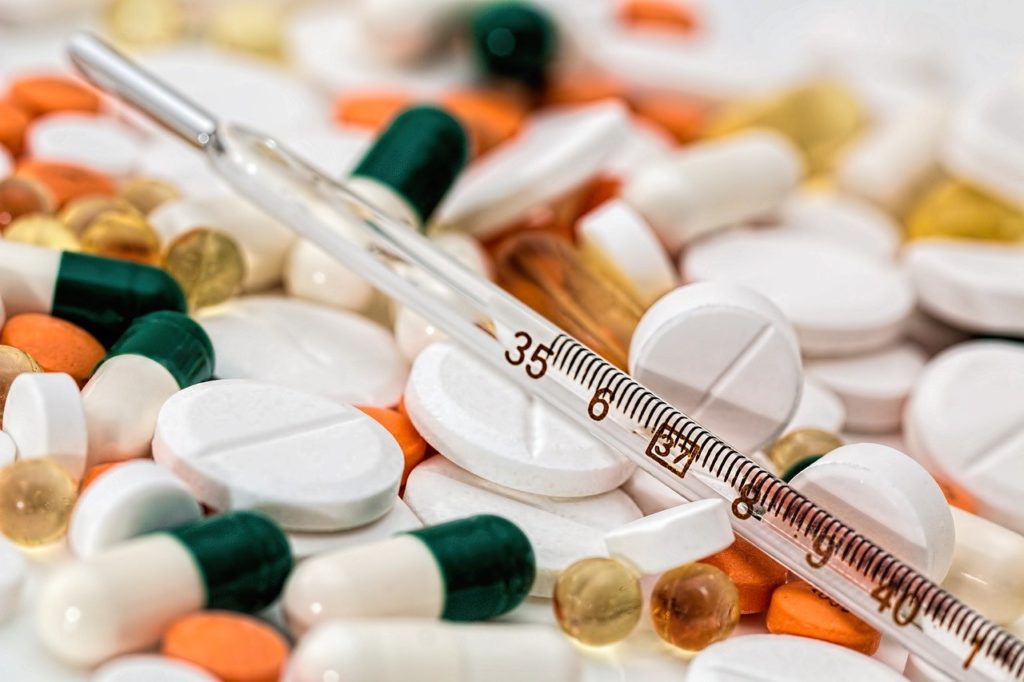
Generally, all drugs have side effects. They may be mild or severe, short or long term. Painkillers are not exempted; they are more dangerous than all other drugs.
Painkillers often cause constipation, acid reflux and diarrhea. Furthermore, they cause hormonal imbalance, which causes painful periods.
OTC drugs also have addictive effects. Therefore, you will condition the body to depend entirely on drugs. Painkillers are also a threat to your immunity. Keep them off and use the remedies listed here, which has no side effects.
#17: Change your family planning methods
Many medics and sites will advise you to use pills and family planning injections to curb painful periods.
I don’t refute their sentiments, but the relief will be short-lived. Conventional family planning methods affect your immunity, hormonal balance, your monthly circle and cause other reproductive complications.
All the effects of these drugs will make you experience very painful periods. Most OTC drugs also have inflammatory effects on your body. This will increase your chances of developing severe cramps.
Herbs for curing Painful Period cramps
According to peer reviewed journals, research institutes and medical studies there are certified herbs that may help relieve period cramps. Here are accurate and current suggested herbs that people find helpful with menstrual cramps
Ginger
Ginger is an anti-inflammatory herb. It inhibits the formation of excess prostaglandin, which is an inflammatory chemical. Prostaglandin in excess can cause cramps and severe period pains.
Ginger also soothes digestion which will reduce bloating that cause menstrual cramps. A study in 2007 showed that ginger is as effective as ibuprofen and mefenamic in relieving menstrual pain.
Another reviewed study shows that using 75mg-200mg (milligrams) during the first 3 days of your cycle may reduce painful cramps.
Dang Gui /Angelica
This is a Chinese herbal medicine that is known for its effects on reproductive health. It’s also effective for nourishing blood and improving blood circulation.
Using Angelica will help improve the flow of blood during your periods, preventing cramping. It causes relaxation effects on contracted uterine walls during Menses.
A study of 112 patients attest of the effectiveness of Angelica essential oil in reducing painful periods was found to be 76.79%.
Fennel herb for painful periods
According to a 2013 publication on the effects of fennel on primary dysmenorrhea, the herb was very effective in reducing the pain and the duration of menstruation.
Menstrual pain is medically proven to be because of uterine coldness, which causes blood stagnation in the lower abdomen.
Fennel is a warming herb that can relieve pain caused by coldness, especially in the lower abdomen.
Dill
A study to compare dill and mefenamic acid effects on menstrual cramps showed that dill has the same capability as the OTC drugs for menstrual pain.
You can use dill in making bread, vegetable dishes, pickles and soups. You can also use it to make dill vinegar. Try to use dill 7 days before your periods. Strive to take at least 1,000 mg (milligrams) a day.
Pycnogenol
This is an extract of the French maritime pine bark. A study found that women who used French maritime pine bark extract reported less pain. Take a moderate amount of this extract and your period pain will reduce..
Cinnamon
A 2015 study comparing the effects of cinnamon capsules and placebo on menstrual complications reported that women who used cinnamon showed less pain, bleeding, and nausea than the group that used a placebo.
Your cinnamon requirement is 2520 mg daily for the first 2-3 days of your period.
Chamomile tea
Chamomile helps relieve muscle spasms. It also improves the levels of glycine, which is a nerve relaxant.
Taking two cups of this tea daily for a week to a month before your menses will help you reduce menstrual pains.
Types of painful periods
There are two types of painful periods based on their causes and risk factors. These include:
Primary dysmenorrhea.
The natural contraction of the uterus walls during menses is called primary dysmenorrhea. Medics also say that people with high prostaglandins levels experience severe pains during their menses.
Risk factors of primary period cramps
- Irregular periods, especially when you take longer time during your menses
- If your menstrual cycle started below the age of 11 years
- Age, with more risk to younger individuals
- Heavy flow during your periods
- Genetics is also believed to be a risk factor for painful periods, although there is limited scientific proof.
Causes of Secondary painful period cramps
Secondary painful periods are caused by a preexisting medical condition. These include:
Endometriosis.
This is a disorder where tissue similar to the ones that line the endometrium grows outside the uterine walls. It’s commonly found on the fallopian tubes, ovaries and pelvis tissues. This condition comes with painful and irregular menses.
Uterine fibroids
Another name for uterine fibroids is leiomyoma. It is a non-cancerous growth that develops on the uterus wall. It consists of muscles and connective tissues.
It’s prone in women of childbearing age. It causes heavy menses bleeding, pelvic pain and prolonged periods.
Adenomyosis
Adenomyosis is a female reproductive system condition that causes the uterus to enlarge and thicken. In this disease, the endometrial tissues grow in the uterine wall.
This condition disappears after menopause but very often in the late childbearing age. It has several symptoms that are related to menses. It can cause:
- Severe cramping
- Heavy and prolonged menstrual bleeding
- Pain during intercourse
- Blood clots during periods
Ovarian cysts
It may be solid or fluid sacs (cysts) within and on the surface of the ovary. Many cysts disappear naturally, but it has some effects for few months before it disappears.
It can cause menstrual irregularities, painful menses, and pain during intercourse.
Scars from previous surgery
Scar tissue is a common cause of chronic abdominal pain. In cases where endometriosis led to surgery, painful periods may result.
Inflammatory bowel disease
This disease is characterized by chronic inflammation of the gastrointestinal tract. It’s also called Crohn’s disease or ulcerative colitis.
A 2014 study found that women with Crohn’s disease experience more painful and heavy periods than those without it.
Pelvic inflammatory disease
PID is an infection of the female reproductive organ affecting the uterus, fallopian tube and ovaries. Its symptoms include pelvic pain, fever and vaginal discharge.
Intrauterine devices (IUDs)
This is a small T-shaped birth control device inserted into the uterus to avoid pregnancy. It has severe complications, which include:
- Very heavy periods
- Irregular periods
- Worsen menstrual cramps
Cervical stenosis
This is a rare condition. It can cause damage to the spinal cord. It’s associated with painful periods.
Take away on Painful periods
Painful periods are inevitable for women. Although the severity of the pain differs, there are some cases of mild pains. You can’t wholly get rid of the menstrual cramps because the uterine walls must contract during your periods, but you can control and shorten its effects.
Follow all the above remedies and herbs that are within your reach and help reduce the condition. In cases where the pain is unbearable, consider visiting your health practitioner.

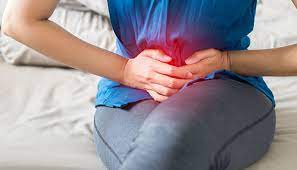
Learning a lot for the first time here. Thanks for the solution.
Pingback: Home remedies for Irregular Periods | GILEAD THERAPY